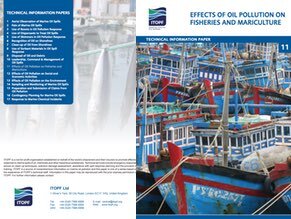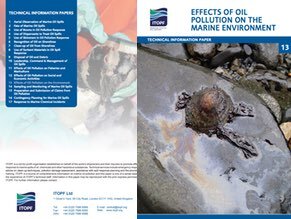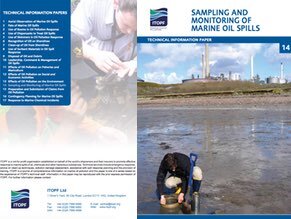Effects in Offshore and Coastal waters
Most oils float on the sea surface where they are spread over a wide area by currents, wind and waves.
Depending on the type of oil, it may disperse into the top few metres of the water column. As a result the potential environmental impacts of oil in open waters are generally confined to this upper area of the water column although, on occasion, some types of oil will sink and environmental impacts may be observed on the seabed. The types of organisms that are commonly impacted in an open sea spill include; plankton, fish, seabirds and marine mammals and reptiles.
Plankton
The upper pelagic zone of seas and oceans support a myriad of planktonic organisms, including bacteria, eggs and larvae, and a variety of animal and plant species. It is well established that plankton is sensitive to oil exposure and consequently short-term impacts should be expected in the immediate vicinity of the oil. However, organisms with planktonic life stages are characteristically present in the plankton in huge numbers and will naturally suffer very high levels of mortality. As a result, a large proportion of a given species will remain unaffected by the spill and it is rare for plankton mortalities following a spill to result in reduced adult populations.
Fish

Although the eggs and larvae of fish may be susceptible to the effects of oil, adult fish tend to be more resilient. Reductions in wild fish stocks in offshore and coastal waters following oil spills have rarely been detected, as it is thought that fish can detect unfavourable water conditions and actively swim away to avoid them. Where mass mortalities have occurred, they have been caused by very high, localised concentrations of dispersed oil in shallow or confined waters. Fish mortalities can occur with cultured fish stocks where individuals are unable to actively avoid the oil.
Seabirds

In open water, seabirds are some of the most vulnerable of all animals, and in some incidents large numbers may perish. Fouling of plumage (which is essential for thermoregulation and buoyancy control) is the most visible effect. Although cleaning and rehabilitation of birds may be attempted, success is often linked to the species of bird, and in many cases only a small fraction of those treated will survive. However, it is encouraging that with experience and research, best practices for bird cleaning are emerging and outcomes are improving. Increasingly, oil contingency plans define policies on how to deal with oiled seabirds and wildlife.
Sea Mammals and Reptiles
Due to the tendency of oil to float at the sea surface, marine mammals and reptiles are at risk as they must surface to breathe. The oil can potentially cause harm to nasal tissues and eyes and whilst mortalities caused by oil have been recorded, the majority of mortalities which coincide with oil spills have usually been found to result from other causes. Mammals that rely on fur to regulate body temperature can be vulnerable to the effects of oil as they may be harmed or die from hypothermia or overheating if their fur becomes matted with oil. For marine reptiles, the greatest impact is probably away from the open sea and on their nesting beaches should they become contaminated with oil.
TIP 11: 漁業及び養殖業に対する油汚染の影響
本資料では、船舶からの油汚染がもたらす漁業や養殖業への影響について述べ、油流出被害の重
大性を軽減する役に立つ対応措置や管理戦略に関するガイダンスを提供する。他の経済資源の被
害については別の技術情報資料にて考察している。
Categories: Environmental effects, Economic effects, Technical Information Paper (TIPS)
TIP 13: 環境に対する油汚染の影響
本資料では、船からの油流出とその結果必要となる防除活動が海洋動植物とそれらの生息環境にどのような影響を与えるかについて述べる。特に、長年さまざまな研究のテーマになってきた油と生物系の複雑な相互作用の考察に注目する。
Categories: Environmental effects, Technical Information Paper (TIPS)
TIP 14: 海上流出油のサンプリングと監視
本資料では、油汚染の定性的・定量的な監視に使うことができる監視およびサンプリングの手順と
手段について幅広く概観している。定性分析は油汚染の流出源を確定することができるが、監視プ
ログラムは炭化水素レベルの定量的な経時変化に関係していることが多い。本資料では分析の適
正手順に関するガイダンスを行うとともに、共通用語について説明している。しかし、特定の生態学
的または生物学的影響および空気中の汚染物質を監視するために必要な技術および調査につい
ては本資料の対象としていない。
Categories: Environmental effects, Planning & operations, Technical Information Paper (TIPS)



